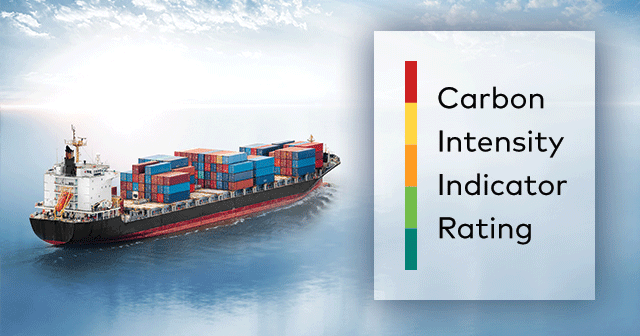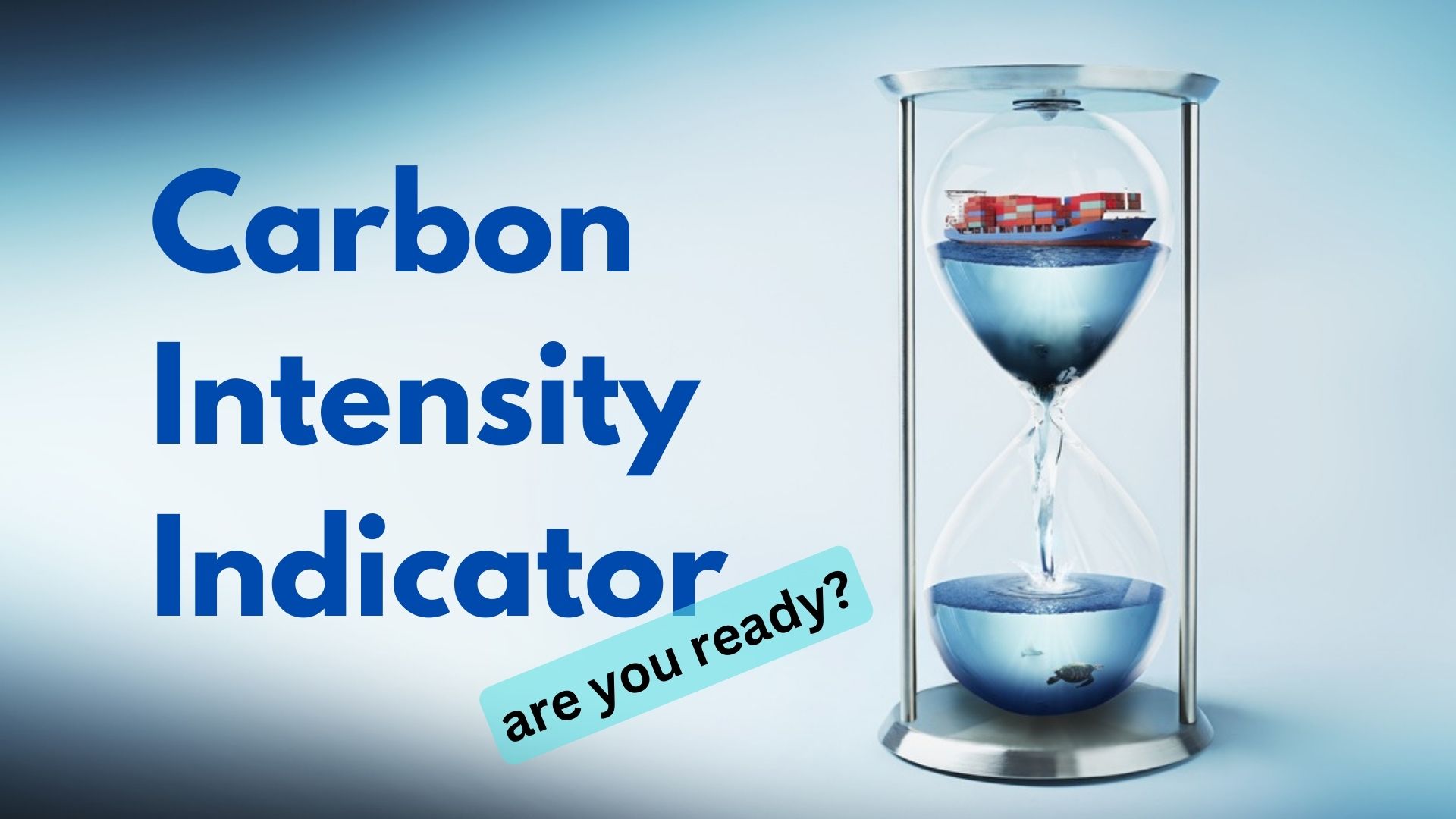
(www.MaritimeCyprus.com) Ship CII ratings will be released imminently for their performance in 2023. However, with the low take-up of Bimco’s CII Time Charter Clause and with many in the industry questioning whether CII is truly fit for purpose, Ian Short examines whether there will be any impact caused by low CII ratings and takes a look at the Bimco CII Clause for Voyage charter Parties published in October 2023.
CII Issues
It appears that much of the industry retains concern that CII does not do the job it set out to do, namely assisting with lowering emissions. As such, based on the current CII formula, shipowners and operators may question whether a ship’s CII rating is truly reflective of its environmental impact over the course of last year and therefore pay little regard to it as a result.
Many of the potential issues with CII were recognised in advance (CII – Time for a Rethink?). With no fines in place for vessels achieving a low rating (“corrective action” need be taken initially for E-rated ships only), the potential impact of a low rating was to be determined to a large extent by market forces. For example, if higher-rated ships became more charterable and could achieve potentially higher rates (there was talk of a possible two-tier market developing with A-C rated ships being more in demand and achieving higher rates than those rated D or E), the knock-on effect could be felt by shipowners in the form of reduced hire or freight income for their lower-rated vessels which, over a year’s period in 2024, could be substantial.
In the absence of the Bimco CII Time Charter Clause, it appeared useful to explore whether a shipowner could claim such losses from its 2023 time charterer(s) under the implied indemnity. However, if the industry remains non-plussed by the CII mechanism, the prospects of a two-tier market developing, initially at least, would appear to be reduced as would therefore disputes arising out of low CII ratings.
Nevertheless, it remains a possibility that disputes may arise between parties brought about by low ratings and Ian Short stands by to assist if and when required.

Bimco CII Voyage Charter Clause
Published last April, CJC’s earlier article on CII also flagged up the fact that in order for a charterer to have the legal right to give orders to improve a vessel’s CII rating, parties would need to negotiate clauses into their voyage charters. In particular, in order to give the bottom time charterer in a chain of contracts the right to be able to even order a vessel to, say, slow steam, a suitable clause would be required in the voyage charter to avoid that time charterer being in breach of its voyage charter obligations to proceed with utmost dispatch and all due dispatch. Other issues were flagged up in that article, such as the fact that parties should also ensure that similar rights in respect of vessel speed orders were incorporated into bills of lading.
The Bimco CII Clause for Voyage Charter Parties published in October 2023 achieves this and it is therefore a less controversial clause than its Bimco CII Time Charter Clause cousin.
Devised after soundings were taken from charterers and traders, BIMCO’s new Voyage Charter Parties CII clause “focuses on course adjustment and speed reduction and includes commercial elements such as data sharing”, according to Stinne Taiger Ivø, Director, Contracts & Support at Bimco.
In order not to upset the “usual” contractual balance between the owners and the charterers under voyage charter parties, the clause entitles the owners/master to order the vessel to adjust course and/or to reduce speed or RPM in order to reduce the carbon intensity of the vessel. However, the clause does not provide the owners with a “carte blanche” to operate their vessel at any (low) speed. The vessel’s speed can only be reduced within the prescribed limits indicated in subclause (a) as a minimum speed (basis good weather conditions). It is for the owners and the charterers to agree at the time of concluding the charter party what that minimum speed, and the relevant good weather conditions, should be.
The parties must insert into subclause (a) an agreed definition of “good weather” (which may already be reflected under provisions contained in the charter party). A "good weather" definition can vary between charter parties for a variety of reasons and should therefore be subject to specific agreement between the parties.
An important aspect of this clause relates to the owners’ “despatch” obligations under the charter party and contracts of carriage. Subclauses (b) and (c) specifically address this issue.
Subclause (b) clarifies that the exercise by the owners of their option to adjust course and/or to reduce speed will not amount to a breach of contract, including any speed and consumption warranties (if incorporated). However, as most voyage charter parties do not contain such speed and consumptions warranties, the parties may choose to delete this reference. Furthermore, subclause (b) clarifies that the laycan as stated in the charter party shall remain unaffected by this clause, because it is important for charterers to be able to rely on the agreed laycan to plan the loading of the cargo and thereby enable them to enhance operational efficiency. Furthermore, the laycan and the minimum speed to be stipulated in this clause are agreed when the parties negotiate the charter party.
Under subclause (c), the charterers are obliged to indemnify the owners against claims for breach of contracts of carriage if any such contracts impose or result in the owners facing more onerous liabilities than those which they have assumed under the clause.
Subclause (d) is intended to avoid arguments over whether the vessel is permitted to proceed below the minimum speed agreed in subclause (a) in circumstances where there is an express or implied right to do so under the charter party. For example, it is possible that a vessel going in and out of ports or one following a convoy might be required to proceed at a slower speed for a limited period of time by the relevant authorities. Emergency situations may also necessitate a slower speed.
Finally, subclause (e) addresses the sharing of relevant data and information to the charterers in relation to the type and quantities of fuel used and distance travelled under the charter party. The rationale underlying this subclause is that many charterers request access to such information in order to perform their own CII calculations. This information can also be relevant for charterers' environmental reporting protocols, highlighting the connection between these metrics and sustainable operational practices. The parties are expected to agree a specific timeframe by inserting an agreed number of days into the clause. If no figure is inserted, the default shall be seven days.
Why the focus on the right to slow steam instead of proceeding with all due dispatch? Measures to improve a CII rating include slower steaming to improve fuel efficiency, in a similar way in which EEXI compliance with, say, overridable power limiters, causes the ship to proceed more slowly. A key difference between EEXI and CII, however, is that a ship ought to comply with its speed restrictions enforced by an overridable power limiter, whereas charterers operating a ship can usually still opt to proceed at a vessel’s maximum permitted speed should they choose to do so.
The clause cannot address all practical issues. A bottom time charterers’ focus is likely to remain maximising profits. A slower ship over a period of time could mean fewer voyages and reduced overall freight earnings. There is also little financial incentive to load less cargo and reduce freight earnings that way to improve fuel efficiency. In other words, financial restrictions on a time charterer providing a vessel with the orders that it may need to boost its CII rating remain in place. Given the market feedback on CII, it would not be surprising if charterers’ primary motive remains profitability on each voyage as opposed to paying particular consideration to giving orders to improve a vessel’s CII rating. As such, even if contractual rights to slow steam are incorporated into voyage charters and bills of lading, it remains to be seen if such rights are taken up by charterers on a global and substantive scale.
Source: Ian Short, Director, Campbell Johnston Clark












